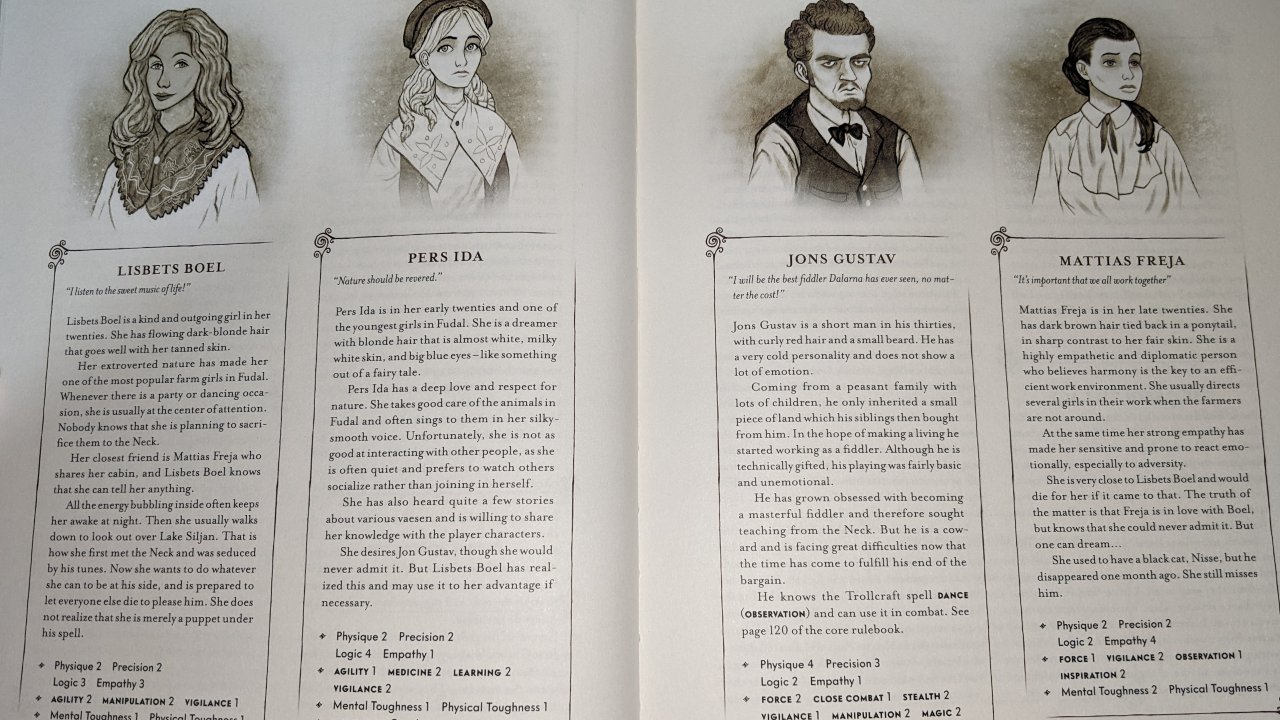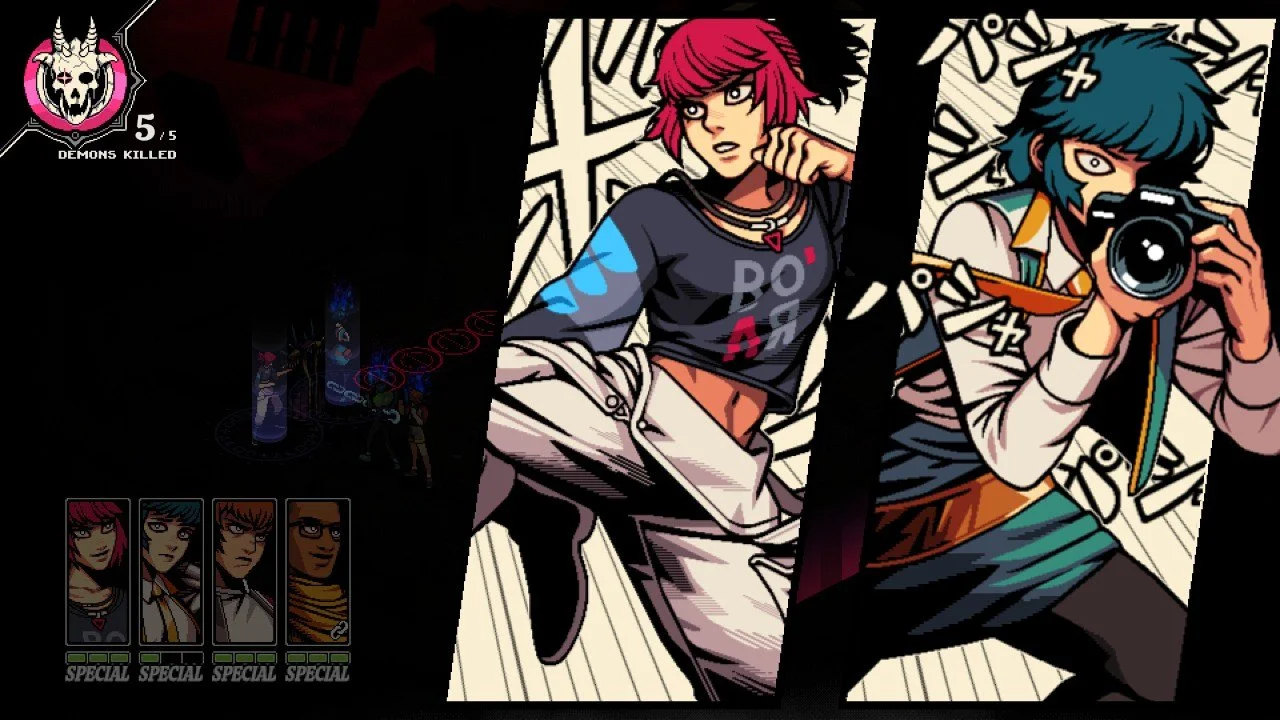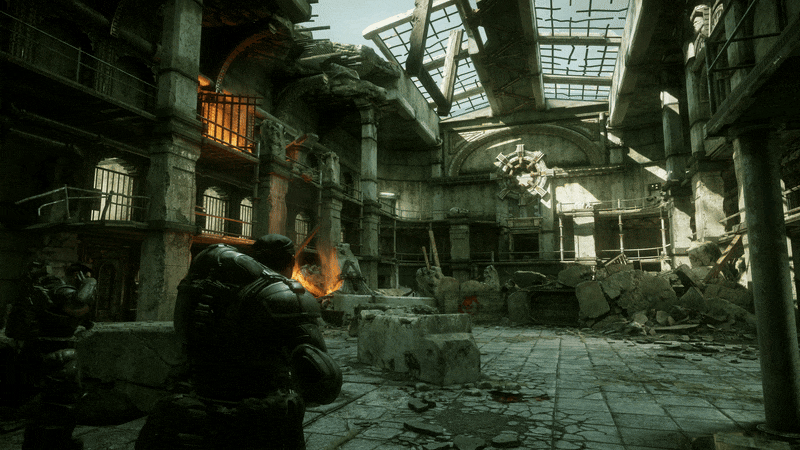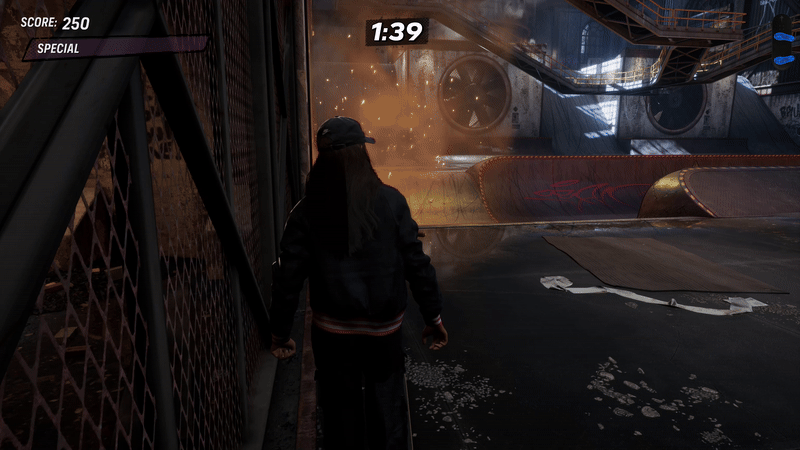Physical Book Provided by Free League Publishing
A long list of tabletop RPGs have been flowing from Free League Publishing as of late, ranging from new titles, to expansions, and even up to big-name adaptations. One of the latest expansions comes to the Nordic horror-based TTRPG Vaesen. This expansion is called Seasons of Mystery and it contains four different stories, one taking place during a different season of the year. They are an anthology though, meaning there is no direct correlation between the four new adventures.
With this expansion being my first hands-on experience with Vaesen overall, I thought it would be best to post my review on the core game. I’ll add notes and impressions from the expansion, but an expansion is only as worthwhile as the base game. So, let’s get into the details.
Gameplay
This tabletop game runs on a rather unique system. It’s a form of a D6 system, but they keep it pretty strict. When it comes to rolling skill and attack checks, you check the character sheet to see how many D6s are going to be rolled. For instance, if a character is attacking with a blade, then you check their Physique score and add it to the Close Combat score to find how many dice are thrown. If they have a 4 in Physique and a 3 in Close Combat, they would roll 7D6. The kicker is, no matter what the check is for or how pressing the moment is, the only thing that counts as a success is rolling a 6 on the die. That’s why you want to roll as many as possible, to increase your chance of rolling a 6.
However, when you are setting up your characters, I strongly suggest only bothering having one character that is good for combat. Going through all four of the new stories in this new module and there is only a handful of combat moments in them. Granted, one particular story is more intense than the others, but it seems the majority of Vaesen is spent role-playing through a mystery of kind. It is better to have deceiving, persuasive, and investigative characters to get through these adventures. If your party is the kind to struggle with simple puzzles in a standard TTRPG, then these tales may be rather difficult for them to solve without Game Master guidance.
Speaking of the Game Master’s side of this game, these campaigns aren’t the kind you can just know what you expect to do in the current session. That’s how I usually prepare, a session and a half ahead of the party, but that does not work in this kind of game. Because of the fact that these are mysteries being solved, the random pathing players take are turned up beyond preparation. After the first session, I made sure I knew the full story all the way through so wherever they chose to go I would be ready. Granted, we finished the first tale in just two sessions, but it was a lesson well learned.
The fact that they put a section at the end that simply spells out the Aftermath, with the good and bad ending options entailed, is pretty great. Not only do you get to let the session close with a final moment within the tale, but you can canonically wrap up the mystery with what happened due to the player’s win or lose.
One of the things I suggest is understanding the finale of each story long before you get to it. I played out the first tale as it was written with my players and we all agreed that it was terribly anticlimactic. The journey there was full of suspense and they were really using their thinking skills to get through the clues, but they were disappointed with how simple the finale was. Granted, they did manage to stumble into the correct route that gave them the exact tool to make it easy, but when it came time to utilize it they hesitated since it seemed too simple. It was too simple, they were correct, and they managed to get the best-ending thanks to that fact. Looking back, I think I would make some little changes to have made it more difficult to pull it off by making the tool out of reach or in the hands of a character mesmerized by the Vaesen or something.
Modules and Enemies
Each story has core characters, background characters that are mentioned as a group of people, and your Vaesen. The goal is for the players to not only solve what Vaesen is there, but what characters are affected by it, what situation is ongoing due to the Vaesen, and how to put a stop to the effects AND the Vaesen. However, you don’t tell them all this, you simply read off the introduction and bring their characters into the opening scene. You’ll want to take pictures of the different handouts they have in the back of the book so you can send them to your players - if you have the PDF then you can cut and paste it into the Paint program that comes with Windows. All aspects of the tale are broken down and have their own sections dedicated to breakdown the character’s behavior, attitude, and role in the story, so it is pretty easy to know your NPCs. They even have their stats listed so you can roll your appropriate D6s when using them in the plot.
The Vaesen core book is a single book thick, making it pretty easy to get through and understand. The system itself isn’t too hard to understand and the majority of the details and difficulties lie in making your character. The straightforward D6 rule, where only rolling a 6 on the die counts as a success, makes understanding combat, skills, and everything rather simple. How many dice do they get to use and did they roll a 6? Were they rolling off against someone else - who got more 6’s? If it went any deeper than that due to a tie on the number of 6’s, I made the GM call that the most 5’s won.
What It Could Have Done Better
This may be a controversial opinion, but games designed to be almost all roleplay and very little combat just aren’t much fun. It puts full reliance on all players, including the GM, to be invested and immersed in the story without faltering. Even when I tried to bring extra combat into the story, unscripted but fitting to the character’s attitude, it was short and limited. It brought down the overall experience for me and got less than enthusiastic retorts from my players as well - even though the stories are intriguing.
I can not get behind this dice system at all. A D6 system where the only way to succeed is to roll a 6 and you only increase your odds by having more D6s to throw just doesn’t give the same satisfaction as other dice systems. I’m not sure what else to say about this other than I believe it is a love-it-or-hate-it system.
Verdict
Vaesen is just not a tabletop RPG that I can get behind. While I can see some people enjoying it due to the stories being interesting and the mystery-solving part of the games can keep players intrigued, it is not a TTRPG for those that enjoy combat in their games. Now, if you are a party looking for a game that is practically pure role-playing, then this is definitely the game for you! However, for me, it simply didn’t provide the entertainment I hope for in my game sessions.
Vaesen and its expansions are available now on the Free League Publishing website, Amazon, and digitally via DriveThruRPG.























